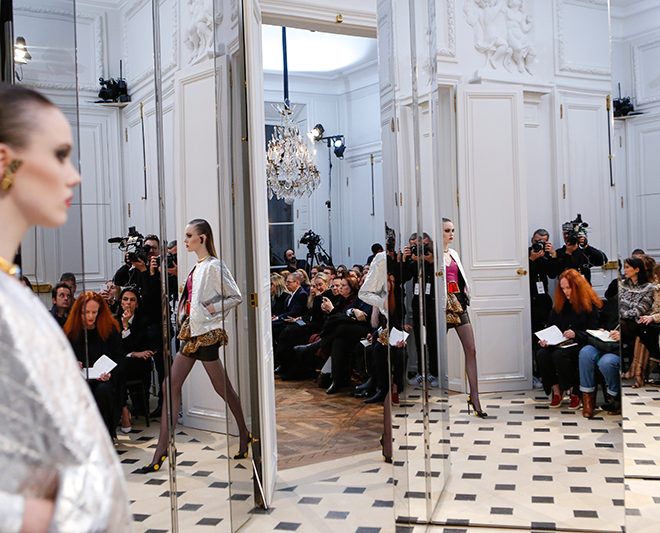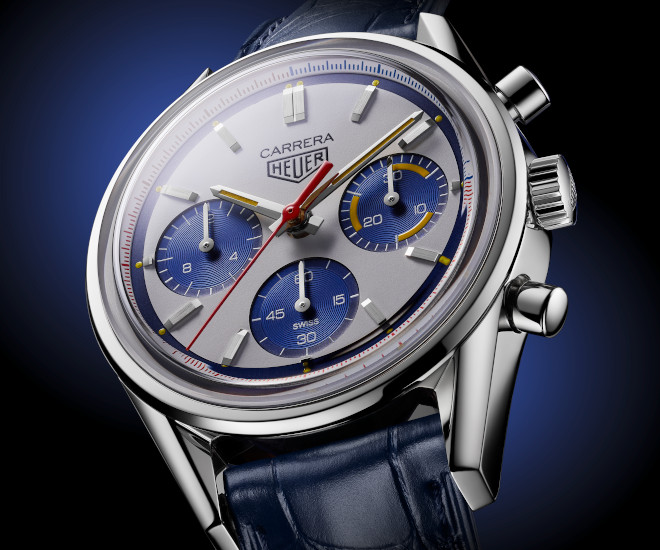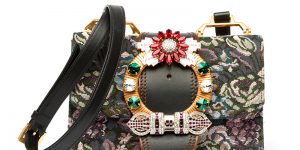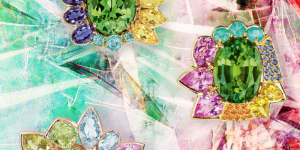Creating Fashion that Sells Isn’t a Sin
Why clothes that sell aren’t necessarily a a strike against high-concept fashion.

What is the point of high fashion these days? Is there a reason that designers still get to sit on their high horses when the most talked about brand these days is Vetements, with all its nonstop talk about “clothing people actually wear”? It’s really an issue of the industry failing to catch up with the times, which is strangely ironic considering that fashion is supposed to represent and extol the times it lives in.
In the aughts of haute couture, and really since before the time of Charles Frederick Worth (considered the progenitor of high fashion) and Marie Antoinette, what fashion represented in the zeitgeist and times was desire. Plain and simple, it was about elevating and making clothing so beautiful, flattering, and jealousy-inducing that it was a means to a social end. Fashion is so strikingly bourgeois and hierarchical today precisely because it has, for so many years, represented a certain degree of sophistication and, indeed, wealth.

Chanel
So what is high fashion for today, if Chanel is no longer haughtily pronouncing items of clothing démodé and instead, planting emojis onto accessories and clothing? If a brand as vaunted and intellectual as Prada is selling bags straight off the runway, can it still maintain a cachet of luxury and intelligence without the stink of shilling products (perhaps by making customers wait for the rest of its seasonal fashion direction)?

Balenciaga
I posit that high fashion today is returning to its core, plain and simple, all over again. It is about beautiful clothing, wonderful things people feel an urge to wear, and representing the cultural values of the times. It is why Balenciaga under Demna Gvasalia feels so… right. With its post-modern melding of old-world techniques and new-age street-wise tricks, it has been vaulted right back into the fashion consciousness – and it is worth paying attention to again. With the advertising and PR money of fashion, it sometimes becomes difficult to differentiate what’s worth the time and what’s paid for. The purest reaction, then, is clothing that can convince customers to part with money to put on their back.

Vetements
The ’90s were all at once the best and worst time for intellectual fashion, but that’s gone down the drain now. Conglomeration of brands and companies meant that fashion as an art and a means to an end was becoming monetized. Think of LVMH, Kering and Prada group’s expansions at the time.
Today, LVMH’s brands are represented in a good half of all fashion magazines’ front bumper of ads. Louis Vuitton, Dior, Céline, Loewe, Kenzo, Marc Jacobs, Givenchy, Fendi – even jewelry and watch brands such as Bulgari, Chaumet, Hublot, TAG Heuer, etc. Kering rounds it up with Gucci, Saint Laurent, Bottega Veneta, Alexander McQueen, Balenciaga, Stella McCartney, etc. Where did the mavericks like Helmut Lang and Martin Margiela go?
In an environment where people simply demanded more and more clothing, it became hard for such intellectually-driven and conceptual designers to continue – never mind that the clothes they designed and created were eminently wearable and beautiful. But it was tricky, because the old shows from Prada, for instance, were such subtle exercises in decryption. Meaning was layered and veiled, and it took a trained eye and mind to pick apart what exactly Mrs Prada was saying each season. Today, a collection like its FW16 vagabond girls-on-the-run one is, while beautiful, almost obvious to interpret. In recent seasons too: fast cars and sweaty glamour, stiff Stepford wives’ tailoring, duney desert travellers. They make big political and cultural statements, but they’re plain to see.

Saint Laurent
Therein lies the problem. When fashion becomes grounds for intellectual concepts, customers get frustrated. It was famously hard for people to grasp Craig Green’s debut SS15 collection with flowing judoka quilts and banners bound to the models. But it struck a chord with the industry collective viewing the show – inspiring some tears, even. Here was a collection set against an Enya soundtrack, resplendent in creative liberty and in the luxury of time it took to craft. It was beautiful and it sold. Next season, he did a similar thing – line and silhouette were only slightly different, but there was a complete reversal in the reaction of the press. Lambasts of similarity and repetition abounded, and it became clear that the industry was on the same page as its readers’ attention spans. Never mind giving designers time to develop an idea and letting it stew, mutate, evolve and be felt out. We wanted more and more of the new.

Prada
So where is intellectual fashion’s place in today’s fast-paced commercial churning environment? It is a conundrum that is hard to solve. Perhaps that is why Vetements is so successful – because it makes you feel like you’re thinking and being smart about things while contributing no effort at all. Perhaps it is why Hedi Slimane’s Saint Laurent was such a runaway commercial success – because you didn’t have to think while wearing his clothes, you just had to partake in his vacuous vein of L.A. grungy cool. Perhaps it is why Phoebe Philo’s Céline is so influential – women don’t have to think about what they’re representing to the world because Philo’s clothing whispers refinement for them. Perhaps it is why Alessandro Michele’s Gucci is so refreshing – they’re simply fun to wear (the same, season after season) and don’t offer much by way of a political or cultural message.
I am not against any of this.

Jacquemus
On the contrary, it is the way fashion is today, and to whine about time gone by is to be astoundingly near-sighted – rather, rear-sighted. Karl Lagerfeld has been so good for Chanel exactly because he takes to the times he lives in like a cultural sponge. There’s a respect to the historical foundations of the brand, but even more surely a perspective of today.

Gucci
What I’m saying is that “commercial” isn’t necessarily a bad word. We’ve been wary of the financial beast for long enough; it’s time to be smart about it and synthesize what we know with what we want. There’s a reason designers such as Christian Lacroix went out of business despite his reign in the ’80s and ’90s in Paris: extravagance and bonanza dresses stopped becoming relevant. After sobering financial crashes, actual plane crashes and a global worldview of uncertainty, the dream was over.

Dries Van Nolen
Today, the new dream is perhaps clothes that slide right into daily life. A note: I’m not saying poorly designed and poorly made clothes with nary a thought or smarts should get a pass for being easy to buy and wear. I’m talking about fashion that has a contextual place in contemporary culture and represents a designer’s point of view. Ultimately, that’s the place of fashion: on our backs.
This article was first published in L’Officiel Singapore.









